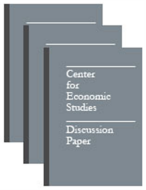Estimating the Distribution of Plant-Level Manufacturing Energy Efficiency with Stochastic Frontier Regression
Estimating the Distribution of Plant-Level Manufacturing Energy Efficiency with Stochastic Frontier Regression
Abstract
A feature commonly used to distinguish between parametric/statistical models and engineering models is that engineering models explicitly represent best practice technologies while the parametric/statistical models are typically based on average practice. Measures of energy intensity based on average practice are less useful in the corporate management of energy or for public policy goal setting. In the context of company or plant level energy management, it is more useful to have a measure of energy intensity capable of representing where a company or plant lies within a distribution of performance. In other words, is the performance close (or far) from the industry best practice? This paper presents a parametric/statistical approach that can be used to measure best practice, thereby providing a measure of the difference, or “efficiency gap” at a plant, company or overall industry level. The approach requires plant level data and applies a stochastic frontier regression analysis to energy use. Stochastic frontier regression analysis separates the energy intensity into three components, systematic effects, inefficiency, and statistical (random) error. The stochastic frontier can be viewed as a sub-vector input distance function. One advantage of this approach is that physical product mix can be included in the distance function, avoiding the problem of aggregating output to define a single energy/output ratio to measure energy intensity. The paper outlines the methods and gives an example of the analysis conducted for a non-public micro-dataset of wet corn refining plants.
Others in Series
Working Paper
Working Paper
Working Paper




